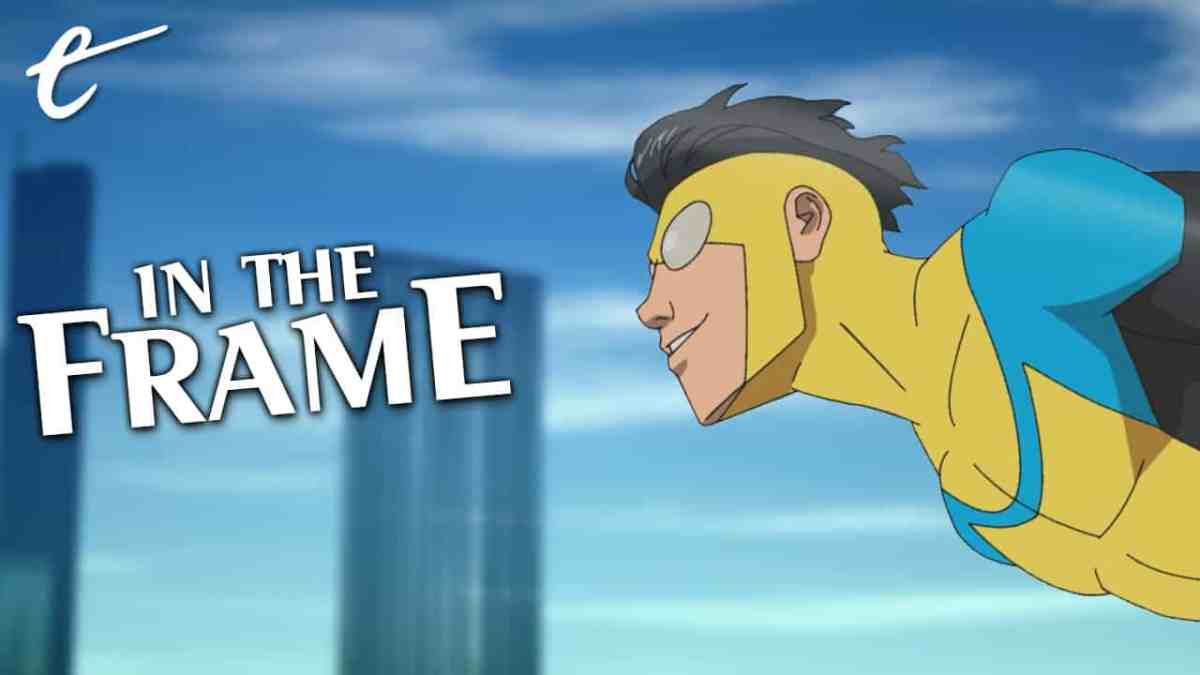Invincible wrapped up its first season on Friday, although it apparently performed well enough for Amazon to greenlight two more seasons of the show.
It would appear that Amazon’s experiment in an hour-long animated superhero show drawing from an independent comic book publisher paid off. Invincible is based on the comic book created by writer Robert Kirkman and artist Cory Walker, published across 144 issues by Image Comics between January 2003 and February 2018. Much of the discussion around the streaming adaptation has framed the series as a subversion or deconstruction of classic superhero tropes.
Talking to IndieWire the weekend of the show’s launch, Kirkman boasted, “Invincible is very much a story that presents itself as one thing and then slowly reveals itself to be something else. The thing that it presents itself as is a traditional superhero story and then it reveals itself to be something very different, more complex, scary, and dramatic.” At Uproxx, Kimberly Ricci framed the show’s arrival as a signifier of “a golden age (adaptation-wise) of comic-book superhero deconstruction.”
It is easy to understand this argument. Invincible is shockingly violent, particularly given that western audiences have long treated animation as something for children. To an audience unfamiliar with anime like Akira or Neon Genesis Evangelion, the bursts of graphic violence in Invincible can seem subversive. Invincible is aware of this; the show’s first truly and insanely graphic action sequence aggressively interrupts the closing credits of the season premiere. It’s alien and hostile.
Invincible only scales upwards from there. One of the season’s recurring motifs involves splattering blood on the title card, so it gets messier as the season progresses. Characters are frequently brutalized and dismembered. Skulls are cracked, eyes are popped, bodies are broken. Standard superhero setups – taking down a mob boss, fighting some killer cyborgs, the climactic urban throwdown – are rendered with almost loving attention paid to the gore and viscera.

Invincible revels in that level of violence. When the adaptation was first announced, Kirkman promised that the series would deliver on his “oftentimes blood-soaked story.” Critics have noted and responded to the violence. At The A.V. Club, William Hughes noted the series’s ability to sharply pivot from “sincerity to semi-cynical super-violence.” At IGN, Siddhant Adlakha argued that “the show’s violence already feels numbing, because it’s violence without real meaning.”
However, the violence in Invincible often feels like a bloody red herring. It is outrageous and surreal. Much like in The Boys, the violence operates as a shock factor, a way of grabbing attention and standing out in an already saturated market for superhero properties. However, while The Boys layers its hyper-violence atop a cynical and subversive interrogation of the superhero genre and its conventions, Invincible uses the violence to contrast an otherwise very conventional story.
Underneath that brutality, Invincible offers a standard superhero setup. Mark Grayson (Steven Yeun) is a teenage boy who develops superpowers. He takes on the secret identity of Invincible, promising to protect mankind. Mark’s journey is that of archetypal teenage superheroes like Spider-Man, as he tries to balance his life as Mark with his obligations as Invincible. Invincible revels in the trappings of this classic teenage superhero soap opera.
Mark must hide his identity from his best friend William Clockwell (Andrew Rannells). He also finds himself trapped in the classic superhero love triangle, with the show hinting that Mark might have to choose between his human classmate Amber Bennett (Zazie Beetz) and fellow teenage superhero Atom Eve (Gillian Jacobs). Mark angsts about missing dates with Amber and struggles with whether or not to reveal his secret to her. These are all among the most classic of superhero tropes.

Invincible is populated with all sorts of stand-ins and surrogates for classic Marvel and DC comics characters, often mapping one for one. Mark’s father Omni-Man (J.K. Simmons) is an obvious Superman analogue. The Guardians of the Globe are transparently modeled on the Justice League, down to individual members. The manipulative and scheming human overseeing this community, Cecil Stedman (Walton Goggins), recalls figures like DC’s Amanda Waller or Marvel’s Nick Fury.
Even when Invincible appears to subvert these conventions, such as by having Omni-Man betray humanity and brutally murder his colleagues on the Guardians of the Globe, it still serves more basic narrative conventions. Invincible reveals that Omni-Man isn’t mankind’s savior, but an invader from an alien planet sent to conquer Earth. While this arguably presents Omni-Man as a subversion of the classic Superman archetype, it also frames Mark’s story in very traditional terms.
The Campbellian hero’s journey is built around the idea of struggle between parents and children, of sons wrestling with fathers. This is why Star Wars has always been a saga about generational conflict, most notably with Luke Skywalker (Mark Hamill) having to confront the monstrous representation of his father as Darth Vader (David Prowse, James Earl Jones). In these sorts of mythic and archetypal narratives, children inevitably have to confront their parents.
Many superheroes have prominent enemies who are parental (and often paternal) surrogates. Ra’s Al Ghul is a potential father-in-law to Batman and was even a physician like Thomas Wayne. Zod was a contemporary of Jor-El before he fought Superman. Sinestro was once mentor to Hal Jordan, introducing Jordan to the Green Lantern Corps. Bruce Banner is defined by antagonistic relationships with both his own father Brian and his girlfriend’s father General Thaddeus Ross.

While Omni-Man might be read as a subversion of the classic Superman archetype, Invincible is not Omni-Man’s story. Instead, Omni-Man exists as that dark paternal figure to serve Mark’s narrative, cast as the antagonistic father that Mark must eventually confront and defeat. It’s not a deconstruction or a subversion. It is as straightforward an Oedipal narrative as imaginable, the cornerstone of these sorts of archetypal stories.
On a nuts-and-bolts level, despite that gore and horror, Invincible is a basic superhero story. The production team working on Invincible understands this. “While all of these stories have similar tropes and traditions, Robert does a great job of meeting those expectations and then messing with those expectations too,” explained J.K. Simmons. Invincible is at least as preoccupied with meeting expectations as it is messing with them. There is nothing wrong with that.
In the era of “peak content,” there should be room for all sorts of stories within these genre frameworks. Shows like Watchmen and The Boys can subvert and deconstruct the conventions of superhero storytelling, but there’s also room for shows like Invincible that play out these tried-and-tested tropes with confidence and skill. After all, there is a reason why so many of these superhero templates have endured for decades. These setups are sturdy and reliable.
Invincible is not radical or innovative. It is executed with a lot of affection for the standard mechanics of superhero stories. Remove the blood and guts, and what Invincible is doing is not very far removed from the model Stan Lee and Steve Ditko (and later John Romita) pioneered on The Amazing Spider-Man. At its core, Invincible understands how these stories work and joyfully embraces them.
While there is something to be gained from interrogating and exploring the genre that dominates pop culture, deconstruction and subversion are not always ends in themselves. There is something to be said for understanding and celebrating why a particular model of storytelling has lasted as long as it has. Despite its occasionally abrasive visuals, Invincible is a loving celebration of the superhero genre in its purest form.





